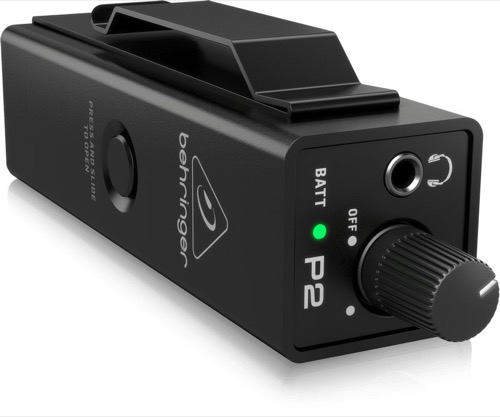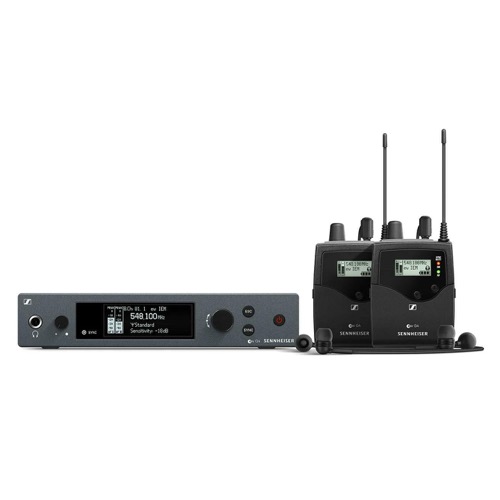Wired or Wireless IEMs – Pros, Cons & What Your Band Really Needs
Introduction
Many bands are now moving towards Wired or Wireless IEM Systems (In-Ear Monitoring Systems). Effectively, this means taking your monitor sound—which would traditionally come out of a wedge on the floor—and putting it through headphones you wear! This has many advantages: it allows the stage to be quieter, the sound engineer can create a better mix, and most importantly, you can hear yourself more clearly at lower volumes. Honestly, if you haven’t tried IEMs, you should give them a go! There are several ways to test them out. Maybe we should put together an article covering some great entry points into IEMs.
However, the other discussion you’ll often come across when it comes to IEMs is: should you go Wired or Wireless? Do you really need that cable? Is it worth the money? Do they sound any different? Well, we’ve tried both, and thought it would be worth putting together our thoughts on it. When you’re looking at IEMs, is it better to invest in Wired or Wireless IEMs? Well, first, let’s go over wired IEMs and why you might want to consider them!
Reasons to go Wired
So first, I think we should go through the reasons you might want to go for a wired IEM rig. Starting with the first one—which could be the biggest one—the price! The cost of a wired IEM rig is so much cheaper! And we don’t just mean by a little bit either. A headphone amp and a set of IEM headphones can cost as little as £50! Super affordable and will give you huge results! Just put the pack on you, run an XLR from your mixer at the desk, and you’re good to go! Simple and super cheap!
This brings us on to the next point: easier to get started! As we said above, it’s only 3 components. It doesn’t take a lot of setup, and there’s not much to get confused about or even have to research! Just plug and play, and you can get started very easily. Even with delivery, if you have a mixing desk with aux outputs, you can get set up for £50 and within 3 days!
I would also argue that it sounds clearer! You don’t have any radio frequency issues or interference. You’re going direct from the board to your ears! Lots of volume (if you need it) and super clear audio—meaning your first run-in with IEMs is going to be a friendly one! As soon as you go to wireless, you introduce interference and background noise that you may pick up. If you’re after simple, clean, and affordable in-ear monitoring, then you want to seriously look at wired IEMs! There is only one downside (which we will get onto shortly).
A Small Issue to Think about!
A minor—but still important—point to consider is that you don’t need to worry about frequency licensing. You have to be careful about using certain frequencies in different countries. This can result in more research, added expense, and unnecessary stress! This isn’t a huge issue, as most systems are sold with a license, but it’s something you simply don’t need to worry about with wired!
Reasons to Go Wireless
One of the many reasons people love wireless IEMs is the speed of setup! It takes far less time to arrive at a gig, attach a pack, plug in your monitors, and away you go—compared to running XLR cables across the stage. For me, I leave most of it set up in my guitar case! My pack is on my strap, and all I have to do is switch it on and plug in my headphones—then I’m good to go! It has helped speed up setup so much. It also means we have to store and sort fewer cables!
Another reason, which we touched on above, is that there are far fewer cables! This means a cleaner and safer stage. This benefit only increases as the stages get bigger. Small local clubs might be fine for running a few cables across the stage, but when you start playing larger venues, those cables add up. They can look messy and also become trip hazards.
Anything else you need to Consider?
My band moved to wireless IEMs straight away because of one reason: the number of members. We are an 11-piece band, so finding a desk with 11 outputs is going to be tough—or expensive! So we decided to get the Behringer XR18 (fantastic desk, by the way), and run multiple IEM packs on one transmitter! This means we have 3 wireless transmitters, and these are split between different members (our drummer is on a wired signal).
This might be less of an issue than you think, but if you move around a lot on stage, then wireless is a must! However, as we’ll talk about shortly—how much moving do you actually do? Of course, you could argue that even the slightest movement is hindered if there are cables lying everywhere—and that’s true! Nevertheless, you have to consider how much movement you really do, and whether it justifies the £100s or even £1000s you’d spend on wireless equipment.
Is Movement That Important?
What you might have figured out reading this is that the main reason you might go wireless is because of the freedom to move around. However, you have to ask yourself: “Is movement that important?” I find certain members of a band think they will move around more than they actually do! Us guitarists are guilty of this. We all aspire to be Angus Young, and some of us really do love a wander! However, those of us playing function and corporate gigs tend to keep to a small space. Next time you’re performing, just think about how much you are actually moving around—do you move that much? Would being wired actually cause you any issue?
For band members like the drummer, keyboard player, and any backing singers, they could definitely be on wired IEMs, as they won’t be moving anywhere! Maybe even the bassist, if he doesn’t move around too much.
"However, that will bring other issues when running several cable runs over long distances—knotting, tangles, and crossover in your cables"
Things to Remember!
Remember, a cable isn’t stopping you from moving—it may restrict how much you can move, but you can still wander around with a cable! What will affect movement is cable length. Run a short cable and you’ll have limited movement, but run longer cables and you’ll be able to move around pretty much the same as you would with wireless! However, that will bring other issues when running several cable runs over long distances—knotting, tangles, and crossover in your cables. Run 4 IEM cables across a stage and you’ll find that unless you organise them, they will get mixed up!
What we Recommend
Wired or Wireless IEMs—what do we recommend? Well, if you are a small band just getting started, then I would 100% say go for wired! You need to experience IEMs, get familiar with them, and before you even think about going wireless, you need to focus on getting your mixes right and sounding good. You can do this with wired IEMs at a super affordable price! This means your costs won’t be high, and you can always upgrade to wireless if you want to down the line!
I would start by getting a Behringer Powerplay P2 headphone amp, a long XLR cable, and some IEMs—and you’re all set to go! I’ll put links for all of this below. Then, once every member of your band has this setup, you can plug it into your desk and start mixing your in-ears. Spend time learning what you like sound-wise, and most importantly, make it sound natural to you!
What about Larger Bands?
If you are in a large band (like myself), you may find that giving everyone their own mix is tough because you don’t have enough outputs on the desk. Now, you can buy a headphone amp splitter—again, links below—but this will just mean more cables. And when you’re talking about 6+ band members, the cable runs start adding up! This is when I would consider looking into some budget wireless IEM systems. Why? Because you can run multiple packs off one system. This means you can all be on wireless IEMs but only have 2 mixes—and no cables.
As we mentioned above, you can also have a mixture—some on wired and some on wireless! Just work out who needs what, and what setup is best suited to each performer. Then, combine the two options above.
Conclusion
So that is our article about Wired or Wireless IEMs. Hopefully, this gives you something to think about when it comes to getting your band to use IEMs. There are so many advantages to IEMs that we didn’t even touch on in this article, but if you just want to check it out, you can set up a wired rig very affordably and give it a go! Hopefully, some of the links we’ve provided will be helpful. All the links in this article are affiliate links, so we earn a small commission from any purchases made through them—at no extra cost to you. It’s a great way to help support the site!
Does your band use IEMs? Let us know what system you’re using! We’d love to see all your IEM rigs. Also, do you still use traditional wedges? If so, why? We’d be really interested to hear why you still use wedges for monitoring! Drop us an email—we’d love to hear all about your monitoring needs!
If you want to support the site then please give us a follow on Instagram and subscribe to our YouTube.
Gigs & Guitars Affiliate Links:
- Buy the Behringer Powerplay P2 (Andertons Affiliate Link)
- Buy the Behringer Powerplay P2 (Thomann Affiliate Link)
- Buy The Behringer Multi Headphone Amp (Andertons Affiliate Link)
- Buy The Behringer Multi Headphone Amp (Thomann Affiliate Link)
- Buy the Shure SE112 IEM Headphones (Andertons Affiliate Link)
- Buy the Shure SE112 IEM Headphones (Thomann Affilaite Link)
- Buy The Behringer XR18 Desk (Andertons Affiliate Link)
- Buy The Behringer XR18 Desk (Thomann Affiliate Link)
- Andertons Affiliate Link
- Thomann Affiliate Link
Check out our other Articles here




